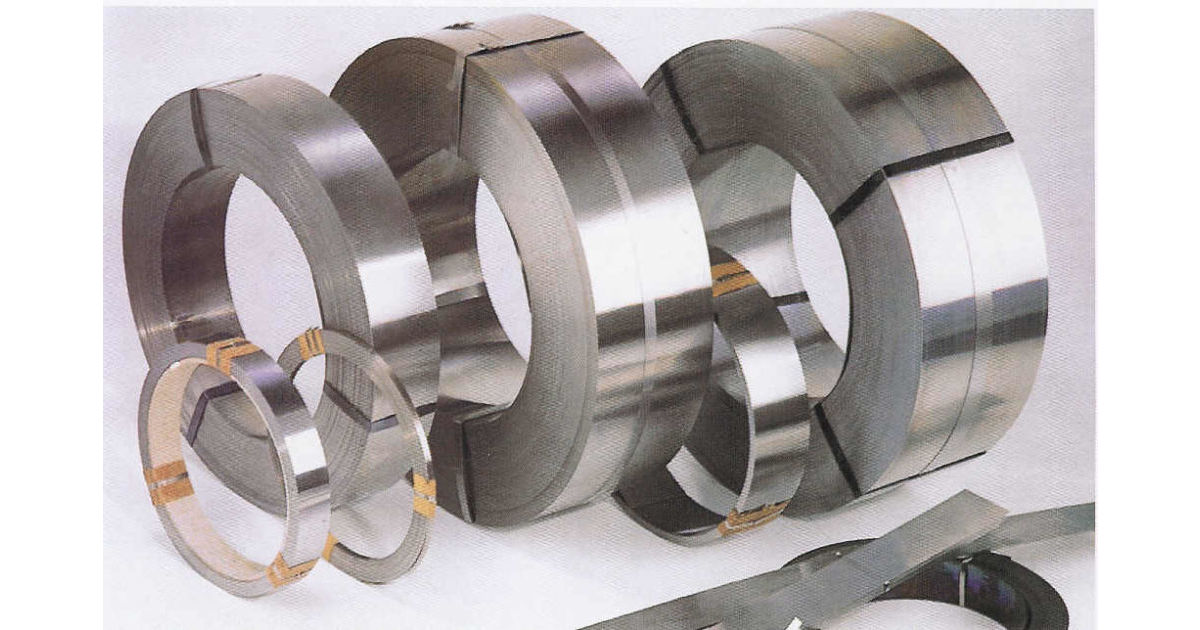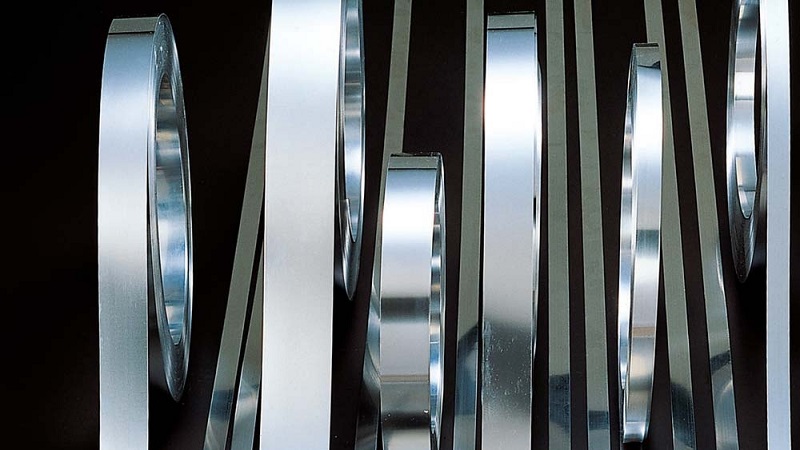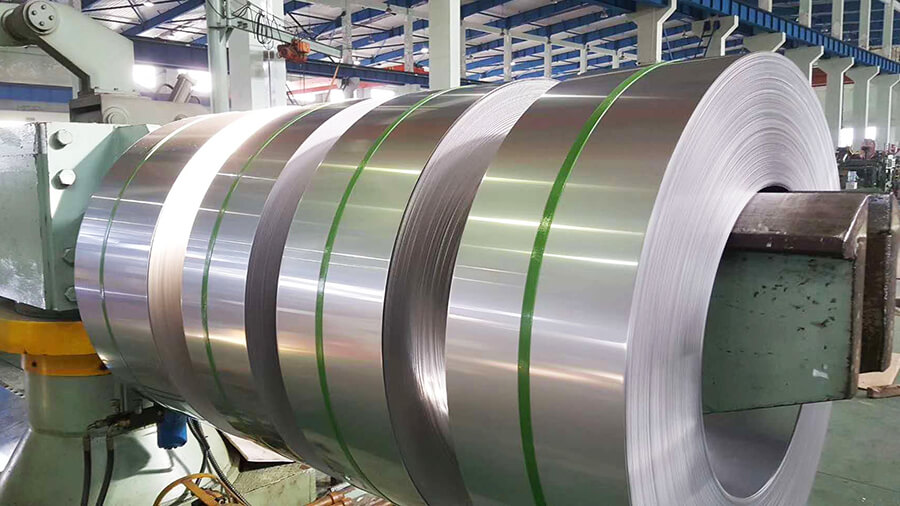
The stainless steel cold-rolled strip is coiled and folded. The transverse direction of the strip is perpendicular to the rolling direction. There are defects of a certain spacing, and the spacing in the rolling direction of the strip shows a gradual opening trend. Measured on a stainless steel cold-rolled coil with a coil diameter of 610mm, the minimum spacing is about 1910mm, and the spacing gradually increases (2240mm) with the length of the strip.
The thickness of the strip is different, and the warping on the reel is different. The thicker the strip, the higher the warping. The corresponding relationship between the thickness of different specifications and the folding and printing:
a) Stainless steel cold-rolled steel strip with a thickness of ≤1.0mm: there is coiling and folding from the inner ring to 1/5 to 1/4 of the coil, and the degree is from heavy to light.
b) Stainless steel cold-rolled steel strip with a thickness of 1.0mm to 2.0mm: there is coiling and folding from 1/3 to 1/2 of the inner ring, and the degree is from heavy to light.
c) Stainless steel cold-rolled steel strip with a thickness of ≥2.0mm: some coils can be seen in almost the entire coil, and the first half of the roll has the jaw print from heavy to light, and the second half of the roll has the jaw print from light to heavy.

In the production process of stainless steel cold-rolled strip, each unit needs to be uncoiled and coiled. The side of the stainless steel cold-rolled strip coiler reel is a cylindrical surface, and its cross-section is a true circle. When the strip is coiled, insert one end into the end of the stainless steel cold-rolled strip coiler reel. In the jaw, since the strip has a certain elasticity, the strip elastically lifts outside the jaw to form a transverse arc-shaped boss. The shape of the coiler is a true circle, when it is coiled, while the strip is a helix, causing the two curves to be inconsistent. When the strip is coiled to the jaw, the thickness of the strip in the previous circle and the elastic lifting together form the convex position, so that the strip in the next circle forms a transverse coiling and creasing here. Subsequent coils continue to be affected by this, resulting in periodic coil creases. According to incomplete statistics, within the thickness range of about 300-500mm in the inner circle of the steel coil, the transverse coiling and folding of the strip steel will be formed, which will affect the surface quality of the steel coil.

However, in the actual production process, due to the action of the jaws and to ensure the clenching of the strip and the action of the coiling tension, the strip has been partially plastically bent at the jaws. At this time, the bending radius of the strip is no longer the same as the coil. barrel radius R, but r. An obvious high point is formed at the jaw. When the second and third circles of strip steel pass through, plastic bending will inevitably occur under the small curvature radius r, so that the surface of the steel strip will form an irreversible transverse deformation along the strip after uncoiling. With the continuous coiling of the steel coil, its r continues to increase. When the formula 1 is satisfied, the stainless steel coil will no longer be plastically bent. Therefore, generally, the coiling creasing of the outer ring of the steel coil becomes lighter or no longer occurs. Similarly, as the thickness of the strip becomes thicker, it can be seen from formula 1 that the minimum required radius of curvature without plastic bending also increases accordingly. Under the same equipment conditions, the coiling and folding defects of the thick steel strip will also increase many.

Therefore, the reasons for the formation of coiling and folding defects can be attributed to:
a) There is a warping of the lead at the coiling place of the jaws, forming a bulge;
b) After the reel is expanded, it is a true circle, while the steel strip is a helix when it is wound;
c) The thickness of the strip is different, and the winding pitch is also different, resulting in different degrees of coiling and printing of the cold-rolled strip with different thicknesses.
NEW RECORD! 2019 Global SS Slab Production Reached 52.4 Million MT!
2020-11-03It turns out that stainless steel can be used in so many fields
2021-11-03Research on the Application of High-Efficiency Core Transformers in Distributed Energy Systems
2025-02-06Analyze Applications of Stainless Steel in Various Fields
2021-11-24Production precautions of stainless steel coils
2021-02-08Comparison between stainless steel cuts
2024-06-06






